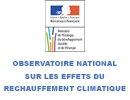What can be learned from the endogenization of technological advances in GEM-E3 ? The case of the Kyoto Protocol.
What can be learned from the endogenization of technological advances in GEM-E3 ? The case of the Kyoto Protocol.
The research proposal at the basis of this investigation aimed to examine to what extent the evaluation of greenhouse gas emissions control policies studied at the European level, within the framework of the enforcement of the Kyoto agreements, changes when the model used – in this case an applied general equilibrium model – takes into account the endogenous growth behaviours described in the new theories.
In classical evaluations, where representations of production are characterized by exogenous technological advances, the response of businesses to environmental policies – usually involving raising the price of energy – is a simple factor substitution.
Taking into account endogenous decision-making regarding R&D widens the range of the possible responses of businesses, whose interests may well be to increase their R&D efforts in order to gain in productivity and thereby reduce costs. In addition, the new theories on ‘endogenous’ growth emphasise two particular traits of goods – their diversity and their quality – which, by creating utilities, generate a new form of growth, with different links to material production. The businessman who notes a rise in energy prices may thus carry out factor substitutions and/or increase R&D efforts in order to reduce costs through two channels: innovating on processes, which increases the productivity of the factors, and innovating on products (in terms of quality or diversity), which increases the utility of the goods without increasing factor use in proportion. The cost of environmental policies can thus be overestimated with models that overlook this particular aspect reported in the new theories.
In consequence, we calibrated a production module with endogenous growth properties in the GEM-E3 model: endogenization of R&D and product and process innovations, but allowing for a gradual depletion of innovation possibilities that, in the long term, forces R&D yields to follow a downward trend, in accordance with Jones’s (1999) line of reasoning. We then compared the efficiency of different policies regarding CO2 emission reductions in Europe according to whether the representation of technological advances used was endogenous or exogenous to the model. We assessed the reductions in costs brought about by endogenous growth mechanisms and by subsidies to R&D for policies aiming to reduce greenhouse gas emissions.
The new endogenous growth module of the GEM-E3 model, especially developed for this research project, allowed us to highlight a reduction of the cost of greenhouse gas limitation policies in France and Europe. The overall result is that the higher the cost to businesses of reducing greenhouse gas emissions, the lower the estimated cost of the policy compared to that obtained using the model with exogenous technical advance. The reduction in costs, measured in terms of GDP, well-being, employment or ultimate consumption, reaches 50 % in the case of unrecycled taxation.
In addition, the results of this investigation underline the importance of associating environmental policies with R&D policies, indicating that the environmental challenge will mainly be technological in nature.
Caution should be exercised, however, since environmental R&D may crowd out private R&D, an effect that has not been taken into account in this study.
| Coordinators |
Paul Zagamé, COMMISSARIAT GENERAL AU PLAN |
| Funding |
ADEME
|
| Budget |
261 200 € TTC
|




